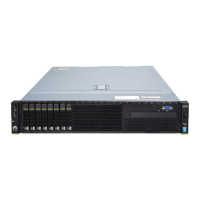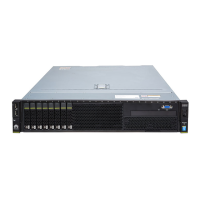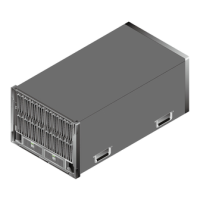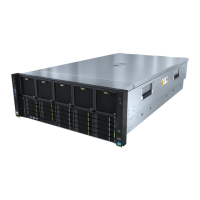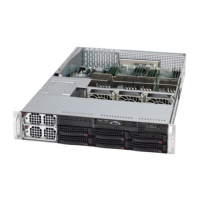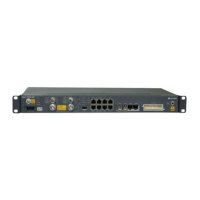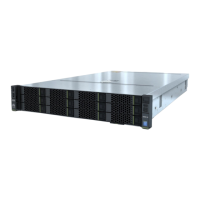No. Compone
nt
Description
26 Dual-SD
module
Provides two SD card slots. Each slot supports an SD card of
up to 32 GB. SD cards can be used as the boot media of the
server. If the iBMC detects two SD cards when completing
initialization, the iBMC automatically congures the two SD
cards as a RAID 1 array. You can view information about the
SD cards and RAID 1 array on the iBMC WebUI by choosing
System Info > Other. However, you cannot modify the
conguration.
27 SD card Uses ash memory and SPIs to store data. Currently, NAND
ash memory is mostly used in the industry. NAND ash
memory stores electrons on the oating gate to store data.
However, electrons frequently passing through the oating
gate will weaken the gate's ability to store electrons and
eventually make the gate unable to store electrons. This
problem is common to NAND
ash memory. To prevent
failures of NAND ash memory, accurately assess the amount
of service data to be written.
NOTE
● An SD card can be used only as a boot device for OSs.
● SD cards have weak endurance and cannot be used as data
storage devices. Use enterprise-level HDDs or SSDs to replace SD
cards for data storage when frequent data erasure operations are
involved.
● Installing write-intensive service software on SD cards will
accelerate the write life consumption and result in perpetual
damage of SD cards. SD cards cannot be used for such services.
● SD cards cannot be used in cache scenarios.
28 FlexIO
card
● One GE FlexIO card with two or four GE ports, or one
10GE FlexIO card with two 10GE electrical or optical ports.
Both FlexIO cards support the Network Controller
Sideband Interface (NC-SI).
● One IB FlexIO card with one or two 56G IB optical ports.
The FlexIO card does not support NC-SI.
NOTE
For details about the FlexIO cards supported by the RH2288H V3, see
Computing Product Compatibility Checker.
2.6 Mainboard Layout
Figure 2-19 shows the mainboard layout.
RH2288H V3 Server
User Guide 2 Overview
Issue 46 (2022-12-28) Copyright © Huawei Technologies Co., Ltd. 37
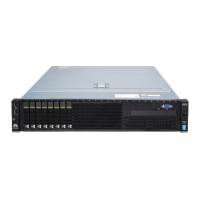
